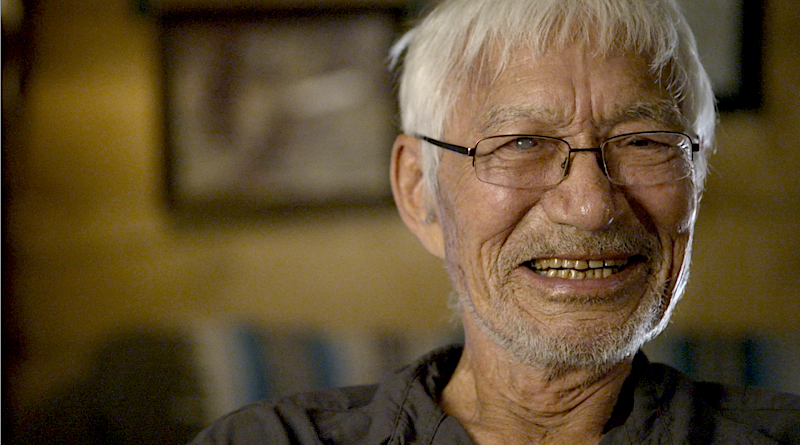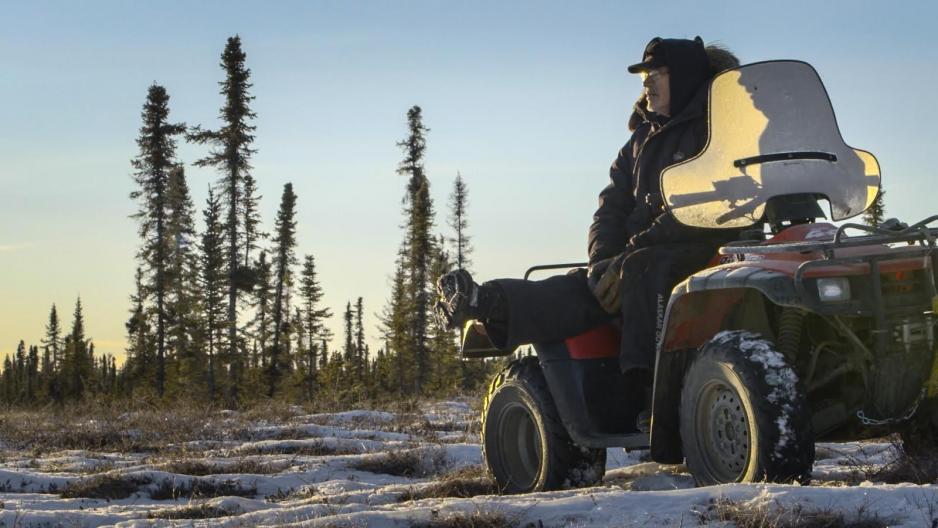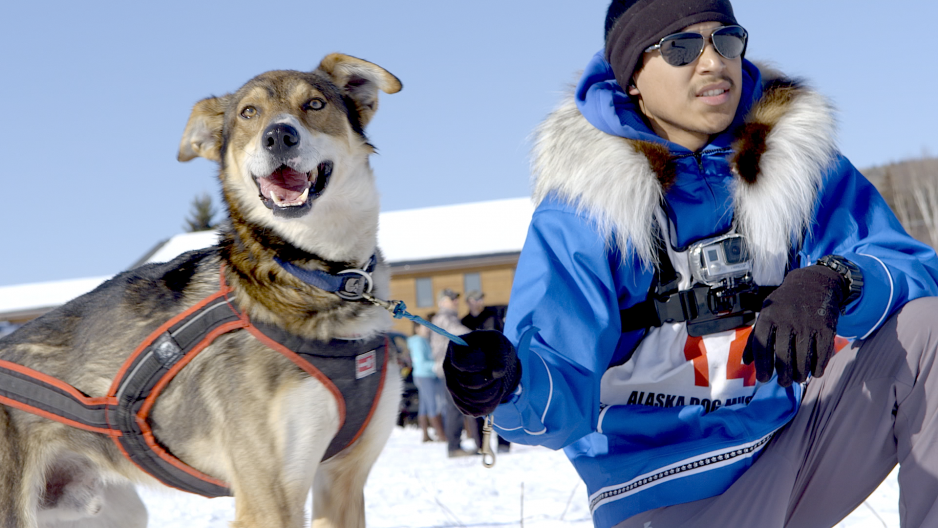George Attla: the greatest sports hero you have "never" heard of

A new film sheds light on the incredible story of a sprint dogsled racer from rural Alaska who rose to fame as the state adjusted to its newly found oil wealth.
George Attla is perhaps one of the greatest sports heroes you have never heard of. The upcoming documentary film Attla attempts to remedy this. The film tells the tale of the Alaska native dogsled racer who overcame childhood health problems to become a savvy businessman, teenage heartthrob, and legendary sprint dogsled racer—all set against the backdrop of the major socio-economic changes happening in Alaska at the time.
The focus is on the last chapter of Mr. Attla’s life as he comes out of retirement to train his twenty-year old grandnephew, Joe Bifelt, how to race sleddogs. Things take a dramatic turn when Mr. Attla is unexpectedly diagnosed with bone cancer and must leave his grandnephew to seek treatment in Anchorage.
High North News had the chance to talk with the film’s director, Catharine Axley, about the inspiration for the project and what she hopes to convey with the film:
- I was wondering if you could begin by briefly introducing your project to our readers?
- Attla is a feature length documentary film. It tells the story of the Alaska native dogsled racer, George Attla, who, in his final year of life, trained his grandnephew to participate in the world’s largest sprint sleddog race. The film tells the story of George’s life from his birth in the 1930s in the interior of Alaska through to his childhood, when he had tuberculosis of the bone, and his eventual rise to fame as the world’s best sprint sleddog racer. The film contrasts that with the changes that occurred in Alaska over the course over his life.
- While international readers may or may not be familiar with George Attla, he is quite well known in Alaska, no?
- It’s interesting because George kind of came out of nowhere in 1958 — this young musher from a village that had never raced in a major adult race before. When he won the 1958 World Championship he immediately put himself on the map in Alaska. But then throughout the 60s, 70s, and 80s, he just kept winning. That, combined with his incredibly charismatic personality, made him a hit with the media, who gravitated towards him.
He kind of became a larger-than-life character in Alaska — especially because the sport was changing dramatically at the time. There were fewer and fewer native racers because snow machines had been introduced into villages and people were getting rid of their dogs. Also at this time there were more outsider mushers coming in from either the lower 48 or Canada, and doing really well in these races. He kind of became a figurehead in that he was a native Alaskan, kept on winning, and had a bit of a rockstar persona.
He is still well known in Alaska, but the sport has since changed, as the Iditarod has now come to dominate dog mushing. Now, when you think of the sport you think of the Iditarod. And although George competed in two, it really wasn’t something that he was training his dogs for, so it wasn’t something he was going to keep doing.
- How did you come to know and hear about this? What got you interested in this project?
- I have a friend in Alaska who is a state representative who had been involved in introducing a bill that passed in the state legislature to recognize native languages as official languages of the state. I was really interested in that process and looking at what it means to have a bill laden with symbolism and looking at how that resonates with communities. So I went up to Alaska to work for a summer in an arts camp to learn more about the state.
While I was there, one of my friends mentioned George Attla. I found some recent articles about him and was really interested, because here was this charismatic sports hero — there were YouTube videos of him, so I could see him back in the day — embarking on a new chapter of his life.
He started a program in his village to introduce kids to dog mushing as a form of cultural revitalisation and I was really interested in what that meant and what that looked like. So I got in contact with him and his partner and met them in person.
While I was there, I found out that he was going to be training his grandnephew. That struck me as a perfect vehicle to explore these ideas, his life story, and the idea of cultural revitalisation — all through a practice that, at least for me, wasn’t the first thing that springs to mind when thinking of cultural revitalisation. The fact that they were going to be training for a year, and that this was his grandnephew — this was a gift for a filmmaker.
- It seems like there are several interlinked stories going on here; the story of a family, of a sport, of rural communities in Alaska and issues of resilience, as well as balancing Indigenous and Western ways of being. I was wondering if you could speak to each of these and elaborate on why you found it important to include and what you hoped to convey with the film?
- With the family, I’m not delving so much into depth in George’s personal family history. I’m instead exploring family through the relationship between him and his grandnephew. But there is a larger family story that is important to all of this. George grew up in a tight-knit family but was diagnosed with tuberculosis of the bone at a young age, and he was in and out of the hospital for nine years and really had this experience of cultural isolation from his family and his community.
When he returned, there was a struggle fitting back in; not only because he’d been away for so long, but because he now had a lame leg which made it more difficult for him to do the things that a young Athabaskan man at that time would have been doing — stuff like hunting and trapping — so he had that challenge.
But he also lost some of his language. He didn’t understand everything that his family was saying when he returned, which contributed to his complicated sense of identity.
I would also add that, throughout the process of making the film, we interviewed a number of George’s siblings and it was a great experience to hear about his life story from people who experienced it with him.

- And what about the story of the sport; the rise and the decline of mushing and in particular, I don’t want to say tension, but the rise of the Iditarod as the predominant race that people think about?
- That’s a really interesting part of this story. When George was born in 1933, it was the time when sprint racing began to emerge as a sport. Up until that point there had been village races where community members had their dog teams that were used for transportation. And then, you know, in the winter months, to get the community members together they’d hold these winter races just to see whose dog was the fastest. It was a really community-based kind of thing.
But around — I would have to check — but around the time George was born, these races began to develop in the city a little more. This was not only with native mushers, but also mushers who were trappers who may not have been native, but who had been relying on dogs for many years as well.
When George was a teenager, that was the time when this sport was really kind of gaining more popularity and everyone throughout Alaska, and in the villages in particular, would tune in to these big races — the Fur Rendezvous and the Open North American Championship. They would listen to the radio and it was a really big deal. George’s sister talks about how they would haul wood early in the morning and get their trapping done so that they could be around the radio in time for the race.
In the 50s, a couple of mushers from Huslia — Huslia is the village George is from — started going to the cities to compete and some of them would win. Huslia became well known for having really excellent dogs, so George kind of follows in this tradition.
But in the late 50s, snow machines started coming into villages and were incredibly useful for many reasons. Some people started to get rid of their dog teams and all of a sudden George had access to all these fantastic dogs as people were just giving them away. He was able to put together a killer team.
Then, throughout the 60s and 70s there are still village races but they are fewer and fewer as less people are using dogs in their everyday lives. But then in the early 70s, the Iditarod is introduced and probably by the 90s becomes the dominant event associated with the sport. There’s more interest and money in the Iditarod.
And so while George was on the forefront of getting sponsorships for dog teams — something that only began in the 60s and 70s — the rise of the Iditarod, in a way, eclipsed sprint racing. Today there are still village mushers who go to sprint races, but it’s less common. Out of Huslia there hasn’t been a dog team in a really long time, so for Joe Bifelt — George’s grandnephew — to go, that was a really big deal.
- It sounds like the story of the sport is very closely tied to life in rural communities in Alaska and has changed along with the changing issues faced by these communities. I was wondering how much this is also a story of the resilience of communities and how they’re confronting the issues they’re facing?
What I’ve been so struck with from the little experience I’ve had in Alaska is how much effort there has been towards revitalizing cultural practices of all kinds — in particular through language programs. This has been incredibly inspiring to see.
George, for example, started this program to introduce kids to dog mushing. This has since expanded to cover many different school districts. Last year they got a grant to introduce dog mushing in public schools as a cultural activity; to have activities about dog mushing. It’s really interesting to see how this tradition can be introduced in a new way. Joe, George’s grandnephew, has participated in this program a little bit.
Overall it’s really neat to see how people are revolutionizing cultural revitalization.
- This seems to tie in to a larger question of balancing Indigenous and Western cultures and ways of being?
- Yeah, definitely. It’s interesting because George’s life embodies, in a way, this need to balance both an Indigenous and a Western perspective. He is from a village and grew up there, but from an early age was exposed to Western culture through time spent in a sanatorium in south-east Alaska. When he returned to his village, he felt like he didn’t really belong there or in the cities. So, it almost seems like his life story and career have centered around finding his own identity within these very different cultural world views.
He transformed sprint racing, something that had been practiced for thousands of years, by transforming it into a business through securing sponsorships and using that to support himself. It is interesting how he initially forged that path and then, later in his life, he returned to his village and is connecting back with the younger generation through dogs. This is again in a new way: through this youth program that’s not necessarily about racing dogs, but about taking care of them — how to form a dog team. It’s not about winning per se.
Another really interesting aspect is how Joe is both really connected to his community and his village; he sees himself as a teacher in the village in the future. So, while Joe is training with George in this more traditional way — where an elder is passing on this knowledge to a younger generation — he is also taking long-distance education to become a teacher. It’s incredible to see him balance those and really succeed.
At the same time, for both of them there’s the challenge of being from a community that values humility and working on behalf of the community and being involved in a sport that has kind of become one about the individual musher.
- If I understand correctly the film is currently in post-production. When, and where, will people be able to see it?
- It will premiere in 2018 at a film festival somewhere — it depends on where it gets accepted. We are also going to be launching community screenings as far and as wide as we can go, but really focusing on Alaska and northern Canada. It will also be broadcast on PBS —again, we don’t know when— but it will probably be in 2019.

